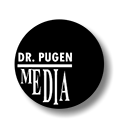MENOPAUSE BIO-IDENTICAL TREATMENTS
A Woman’s Hormonal Journey
At around age 12, girls enter puberty, a time when increased estrogen production causes the start of menstruation and the development of secondary sex characteristics (such as breasts and pubic hair). For the next two decades or more, a woman's hormonal cycles ideally operate like a finely tuned machine. Each monthly cycle of menstruation is a fine balance between two ovarian hormones, estrogen and progesterone. During the first half of the menstrual cycle, estrogen levels rise and the lining of the uterus builds up in preparation for a fertilized egg. In the second half of the menstrual cycle, progesterone levels rise. If fertilization does not occur, progesterone levels fall, and the uterine lining sloughs off, (menstruation) and the cycle begins again.
This cycle demonstrates the importance of proper balance between estrogen and progesterone. Estrogen is a pro-growth hormone, (high estrogen levels are associated with increased risk of certain cancers). Progesterone protects women from estrogen's growth effect and is used to help prevent cancers in conventional HRT. The two hormones show their opposition in other ways; estrogen increases body fat while progesterone decreases body fat.
Around age 35, many women enter perimenopause, characterized by gradually declining estrogen levels and more rapidly loss of progesterone; these different rates of decline can cause imbalance. Even though menstruating, a perimenopausal woman may begin to experience hormone imbalance symptoms with irregular periods, headaches, engorged breasts, cramping, and bleeding problems.
Peri-menopause is followed at around age 50 by menopause; medically defined as the cessation of menstruation for 12 successive months. Most women will spend about one-third of their lives in this post-period phase. At this stage, the ovaries fail completely and estrogen and progesterone levels (as well as other sex hormone levels i.e. Testosterone) rapidly decline. Along with uncomfortable side effects, menopause is associated with increased risk for cardiovascular disease, osteoporosis, and breast cancer. It is also accompanied by changes in the endocrine, psychological, musculoskeletal, neurological and immune systems.
For most women, menopause means symptoms of hot flashes, night sweats, disturbed sleep, fatigue, low libido, depression and anxiety. Physical changes happen with urinary tract atrophy, (urinary frequency, infections etc.) vaginal atrophy and dryness with discomfort during sexual intercourse. These discomforts can last quite a long time.
Other symptoms include the following:
• Strength, energy, muscle, and bone loss
• Cognitive changes such as decreased memory, lack of concentration, and decreased learning capacity
• Elevated cholesterol levels, increased blood pressure and atherosclerosis, (hardening of the arteries), with altered cholesterol metabolism.
• Estrogen loss is a leading factor in cardiovascular disease, in woman.
Causes of Estrogen Dominance
Beginning in perimenopause and continuing through menopause, women’s production of progesterone tends to decline more rapidly than their estrogen production. Between puberty and perimenopause estrogen levels can be raised by external influences, such as birth control pills, chemicals or toxins. If the ratio between progesterone and estrogen is altered in favor of estrogen, a condition may result that is known as "estrogen dominance," associated with increased risk of cancer and other health risks.
Causes of estrogen dominance include the following:
• Environmental pesticides
• Exposure to xenoestrogens (external estrogens) such as those found in herbicides and in cosmetics, glue, plastic and other petrochemicals
• Unopposed conjugated equine (horse’s,) estrogen (CEE) conventional HRT
• Obesity, in which fat cells convert other hormones into estrogen
• Increased intake of sugar and processed food
Estrogen dominance often produces the following symptoms:
• Menstrual cramps and migraines
• Bloating, Breast tenderness, Hot flashes
• Weight gain, hair loss, fibroid tumor, endometriosis
• Fatigue
• Depression
Conventional hormone replacement, which relies primarily on equine (horse) estrogen and synthetic progestin (not true progesterone), is associated with increased risk of breast cancer and heart attack. Unopposed hormone replacement (estrogen only) is associated with increased risk of breast and uterine cancer. These forms of HRT should not be prescribed for the prevention of osteoporosis or heart disease.
To conclude…
• Women's hormone levels begin to change when they are young in their mid-30s. At this time, progesterone and estrogen levels both decline. However, progesterone declines more rapidly.
• If the estrogen / progesterone balance favors estrogen, a woman may be “estrogen dominant,” with a wide variety of female conditions, including endometriosis, uterine fibroids, polycystic ovaries, and breast cancer.
• Natural, bioidentical hormone replacement with estrogen and progesterone offers an alternative much safer than conventional HRT.
• Because all levels of are interconnected and many freely convert to one another, true hormone restoration monitors all hormones including thyroid, adrenals, and testosterone.

Dr. Pugen's Anti-Aging Clinic
Clinical and Aesthetic Medicine
G1-3215 Hwy 7 East, Markham, ON L3R 3P3
OFFICE: (905) 475-9433
FACSIMILE: (905) 470-6214
Copyright ©2016 Dr. Gregory Pugen
Website by AVH Consulting and Management




This website is for informational purposes only and is not a substitute for medical advice, diagnosis or treatment.

